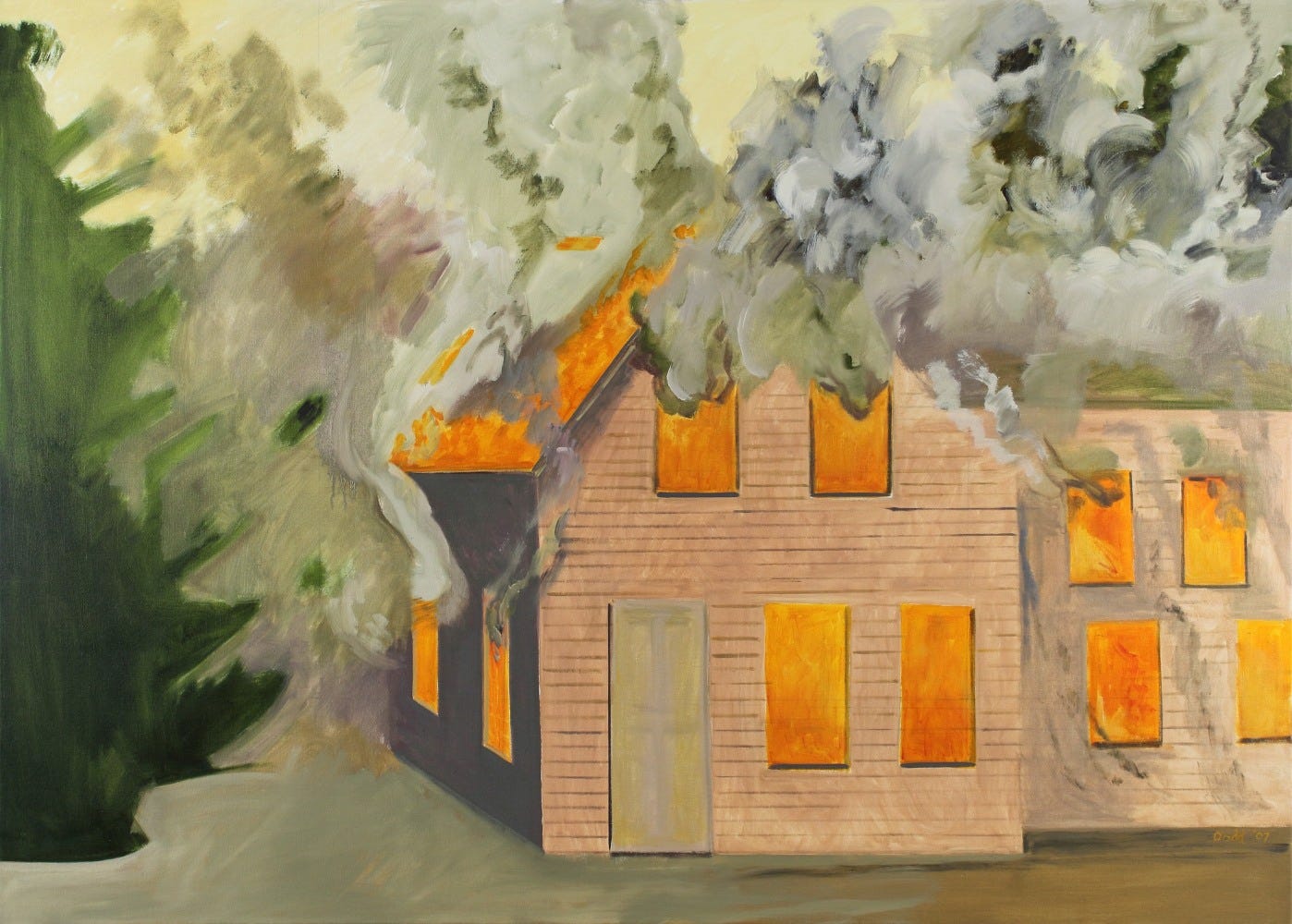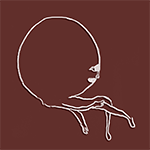Making Art in a Burning House
Finding bravery on and off the page.
In the Parable of the burning house1 from the Lotus Sutra, children play in a room of toys with such contentment that they fail to notice their house is on fire. Their parent urges them to leave, but they are unwilling to part with their toys, and the parent cannot carry them out due to a narrow exit. The parent is only able to convince the children to leave with the lie that the very same toys await them outside.
The parable suggests that earthly life consists of a series of burning houses, each threatened by fires of varying shape and size, each full of toys urging us to stay. It emphasizes the need for constant leaps of faith away from the flames—even when such leaps require us to deceive ourselves or suspend our belief systems, which often exist in service of our toys. The narrow exit implies that we alone can enact this escape.
I am no Buddhist, but there is a mystical quality in the way this parable inserted itself into my queue (interrupting Connie Converse, of course) while I was proofreading the short stories I’ve been writing over the past half-decade, trying to decide which ones to include in my forthcoming collection. I paused to absorb it, then continued flipping through pages in the manuscript, chuckling at the burning houses my narrators were stuck within. They keep failing to take the escape routes whispering (or screaming) at them from the pages. The pieces are, of course, largely inspired by my life; many of these burning houses are mine.
Perhaps you, clever readers, have already deduced what my toys are. If you know me personally, you might have been aware of what they were long before reading this. For me, however, it took the intervention of this parable to accept that my most cherished toys are these words you’re reading, these Lego blocks I’ve assembled into elaborate structures. Give me a spare moment and I’ll return to the play room. Have you seen this structure? It won an award. With 3,000 blocks, I recreated the entire contents of my burning house, documenting each of my burns while flames continued to lick at my extremities.
Most artists characterize their suffering through their work—this is nothing new. Nor does it devalue the art. The art becomes a toy, however, when its achievement—the satisfaction of completing it—absolves the maker of corrective action. Addictions are good at convincing the addict of their productivity. Substances trick the abuser’s body into thinking it needs them to function; a wealth-obsessed person marvels at her growing portfolio before returning to the hamster wheel to accrue more wealth; I, the writer, take pride in finding new ways to carve through (or conceal) my issues with language, laying out the results for anyone to see. I label this growth and carry on doing nothing about the issues.
Two examples of art-toys, of the lowest and highest order, respectively: the numerous viral “art critics” of Substack who lack a basic understanding of what critical engagement entails, pouring the full weight of their fragile egos into writing that shallowly demeans or praises the work of others; Alice Munro—legendary short story writer, champion of women’s stories—failing to confront the very same raging fire in her own house2 that gets explored with tenderness and lucidity in so much of her fiction.
Parables are not laws, of course; metaphors can be twisted and broken. I believe that art can simultaneously function as the distracting toy and the concerned parent. My fiction, as a toy, digests, dramatizes, diagnoses. Its service as the parent might come from encouraging characters to brave a dangerous escape. It’s an easy excuse, while locked inside of a burning house, to say that my narrator’s fulfillment would be saccharine, or cliche. But people in the real world surprise themselves every day. They abandon their toys and step into burning hallways. They get scorched, they relapse, they find exits—the outcomes matter less than the leap of faith that was attempted.
Could finding the right words on the page summon bravery outside of it? I suppose that’s my leap of faith. Of course, there’s always the possibility that this letter is just another toy.




